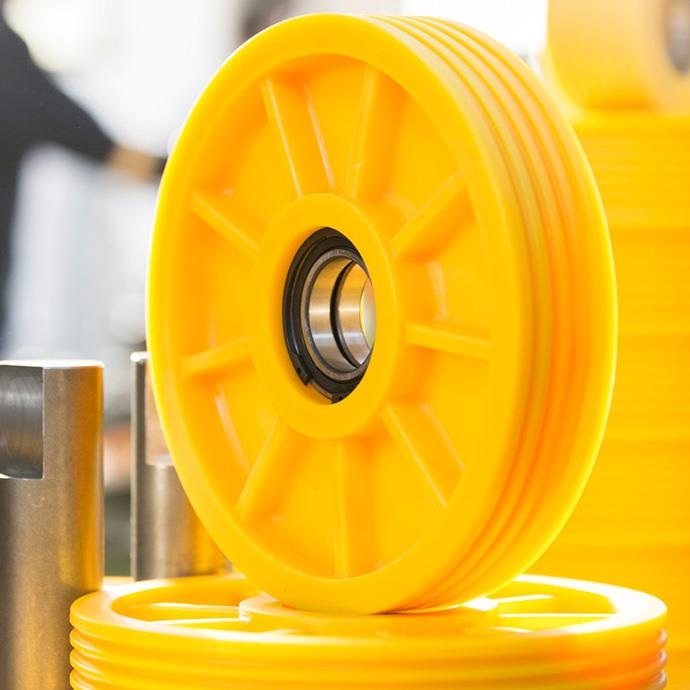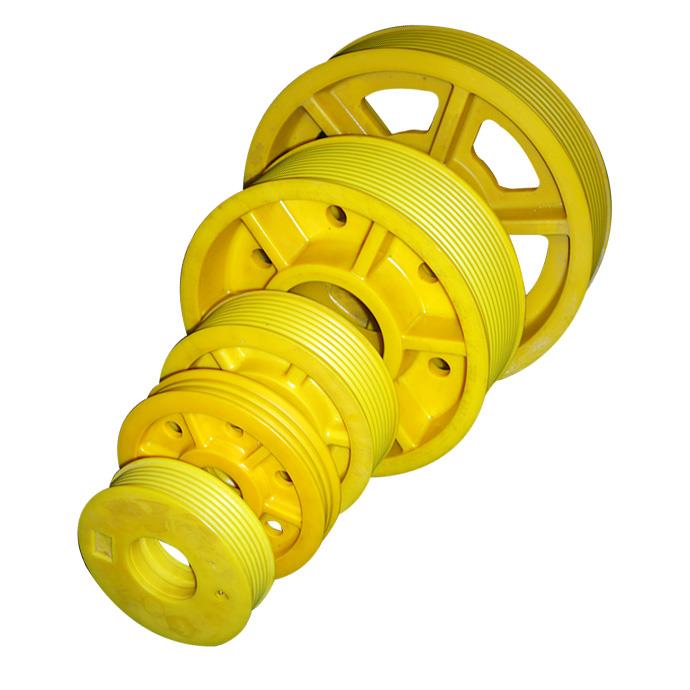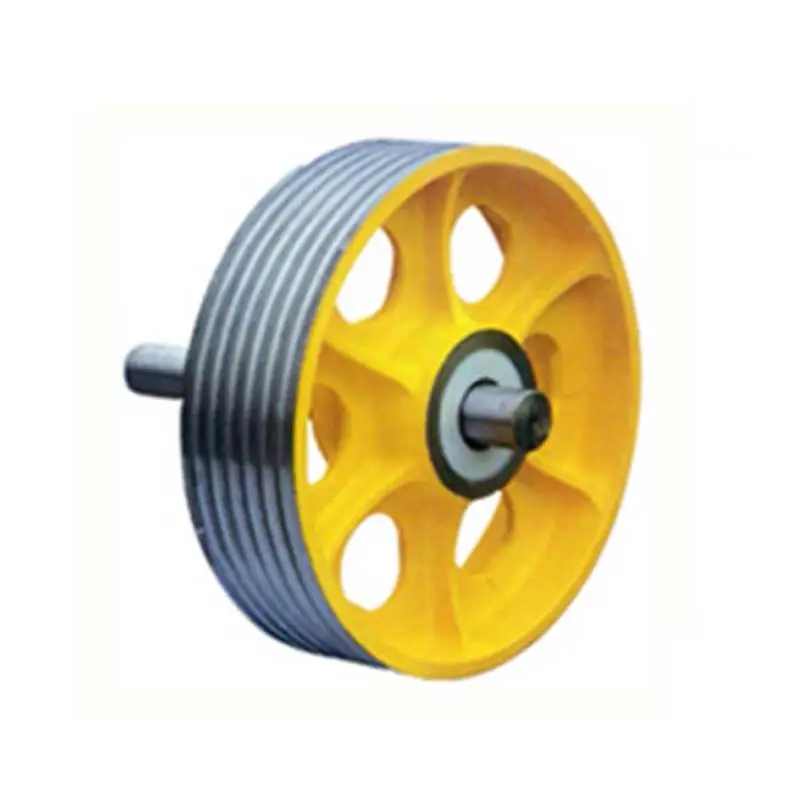Product Description
Product Description
Name:Stainless 304/316 Rigging Swivel Eye Single Sheave Pulley
Packaging:Reel for wood made or plastic made
Monthly capacity:500 tons per month
Price term:FOB ZheJiang , EXW
Surface treatment:bright and smooth
Material:stainless steel 304,stainless steel 316,stainless steel 316L or other special.
Key words:
Single wheel for lifting, pulley Square type for lifting.
ZheJiang Juke Metal products Co.,LTD are professional in producing stainless steel wire rope accessories(Casting high quality stainless steel hardware for swivel eye pulley single sheave/ Stainless Steel Swivel Eye Double Sheave/ Swivel Pulley Block Double Sheave. etct.)
| Details of the figure | Detailed sizes | |||||
| Size | A | B | C | D | E | |
| mm | mm | mm | mm | mm | mm | |
| M75 | 23 | 33 | 155 | 75 | 15 | |
| M100 | 25 | 40 | 191 | 100 | 17 | |
| Details of the figure | Detailed sizes | |||||
| Size | A | B | C | D | E | |
| mm | mm | mm | mm | mm | mm | |
| M15 | 12.5 | 13 | 61 | 15 | 5.5 | |
| M20 | 14 | 18 | 73 | 20 | 6.5 | |
| M25 | 16 | 20 | 85 | 25 | 10 | |
| M32 | 15.5 | 20 | 92.5 | 30 | 10 | |
| M50 | 19 | 31 | 132.5 | 50 | 13 | |
| Details of the figure | Detailed sizes | |||||
| Size | A | B | C | D | E | |
| mm | mm | mm | mm | mm | mm | |
| M15 | 12 | 13 | 61 | 15 | 6 | |
| M20 | 13.5 | 17.5 | 72 | 20 | 7 | |
| M25 | 15 | 20 | 83 | 25 | 11 | |
| M32 | 15 | 19.5 | 88 | 30 | 12 | |
| M50 | 19 | 23 | 117.5 | 48.5 | 13 | |
Detailed Photos
Certifications
Company Profile
ZheJiang CHINAMFG Metal Products Co., Ltd. offers a variety of products which can meet your multifarious demands.
We adhere to the management principles of “quality first, customer first and credit-based” since the establishment of the company and always do our best to satisfy potential needs of our customers.
Packaging & Shipping
FAQ
Q1: Can I have a sample of stainless steel rigging accessories?
A1: Yes, we welcome sample orders!
Q2: Does your company has any MOQ for stainless steel rigging accessories?
A2: Low MOQ, 1000 pcs for sample checking is ok.
Q3: How do you ship the goods and what about the delivery time?
A3: We often ship by TNT, DHL, FedEx. It takes 3-5days to reach. For mass quantities, we usually transport by ship.
Q4: How can I ensure the quality?
A4: We have ISO, CE certificates to prove our qualities. A third inspection is acceptable.
/* January 22, 2571 19:08:37 */!function(){function s(e,r){var a,o={};try{e&&e.split(“,”).forEach(function(e,t){e&&(a=e.match(/(.*?):(.*)$/))&&1
| Surface: | Bright Smooth |
|---|---|
| Material: | Stainless Steel 304 |
| Size: | M15-M50 |
| Grade: | SS304 |
| Usage: | Lifting Hanging |
| Customized: | Available |
| Samples: |
US$ 1/Piece
1 Piece(Min.Order) | |
|---|
| Customization: |
Available
| Customized Request |
|---|
How do lifting pulleys contribute to the longevity and reliability of lifting equipment?
Lifting pulleys play a significant role in enhancing the longevity and reliability of lifting equipment. They contribute to the smooth functioning of the lifting system and help minimize wear and tear on various components. Here’s a detailed explanation of how lifting pulleys contribute to the longevity and reliability of lifting equipment:
1. Load Distribution: Lifting pulleys distribute the weight of the load evenly across the lifting system. By spreading the load over multiple ropes or cables, pulleys reduce the strain on individual components, such as cables, hooks, and attachments. This balanced load distribution minimizes the risk of overloading and premature failure of specific parts, thereby prolonging the lifespan of the lifting equipment.
2. Reduced Stress on Components: Lifting pulleys help to alleviate stress on various components of the lifting system. When lifting heavy loads, the force exerted on the cables or ropes can be substantial. By utilizing pulleys, the load is distributed across multiple ropes or cables, reducing the stress on each individual component. This reduction in stress helps prevent excessive stretching, bending, or breakage of cables, ensuring the reliability and longevity of the lifting equipment.
3. Efficient Force Transmission: Lifting pulleys facilitate efficient force transmission within the lifting system. As the load is distributed and redirected through the pulleys, the force is applied in a controlled and balanced manner. This efficient force transmission minimizes unnecessary strain on the lifting equipment and reduces the risk of sudden jerks or jolts that can cause damage or premature wear.
4. Improved Load Control: Lifting pulleys enable precise control over the lifting process, allowing operators to adjust the speed, direction, and position of the load with accuracy. This precise load control helps in preventing sudden or uncontrolled movements that can put stress on the lifting equipment. By ensuring smooth and controlled load handling, pulleys contribute to the longevity and reliability of the lifting equipment.
5. Reduction in Friction: Lifting pulleys are designed to minimize friction between the pulley and the ropes or cables. They often incorporate ball bearings or other low-friction mechanisms to ensure smooth rotation. By reducing friction, pulleys minimize wear on the ropes or cables, as well as on the pulley itself. This reduction in friction helps to extend the lifespan of the lifting equipment.
6. Protection Against Abrasion: Lifting pulleys can incorporate features such as protective coatings or linings to minimize abrasion and wear on the ropes or cables. These protective measures help prevent damage to the lifting equipment caused by repeated rubbing or contact with rough surfaces. By safeguarding against abrasion, pulleys contribute to the longevity and reliability of the lifting equipment.
7. Maintenance and Serviceability: Lifting pulleys are typically designed for easy maintenance and serviceability. They can be quickly inspected, lubricated, and replaced if necessary. Regular maintenance, including cleaning and lubrication of the pulleys, ensures their optimal performance and extends their lifespan. By facilitating routine maintenance, pulleys contribute to the overall reliability and longevity of the lifting equipment.
8. Compatibility and Interchangeability: Lifting pulleys are often designed to be compatible and interchangeable with various lifting systems and configurations. This compatibility allows for easy replacement or upgrading of pulleys as needed. Interchangeability ensures that pulleys can be seamlessly integrated into the existing lifting equipment, thereby extending its reliability and lifespan.
In conclusion, lifting pulleys play a crucial role in promoting the longevity and reliability of lifting equipment. Through load distribution, stress reduction, efficient force transmission, improved load control, friction reduction, protection against abrasion, maintenance and serviceability, as well as compatibility and interchangeability, pulleys contribute to the smooth functioning and extended lifespan of the lifting equipment.
What are some real-world examples of lifting pulley applications in construction projects?
Lifting pulleys are widely used in construction projects for various lifting applications. They enhance the efficiency and safety of lifting heavy loads, equipment, and materials. Here are some real-world examples of lifting pulley applications in construction:
1. Tower Crane Lifting: Tower cranes are commonly employed in construction projects to lift and move heavy materials and equipment vertically and horizontally. These cranes utilize lifting pulleys in their lifting mechanisms. The pulleys distribute the load’s weight, provide mechanical advantage, and enable precise control over the lifting process.
2. Mobile Crane Operations: Mobile cranes, such as truck-mounted or rough-terrain cranes, are versatile lifting equipment used in construction sites. Lifting pulleys are integral components of these cranes, specifically in their boom systems. The pulleys help lift heavy loads and position them accurately, facilitating efficient construction operations.
3. Elevator Installation: In construction projects involving multi-story buildings, elevators are essential for vertical transportation. Lifting pulleys are crucial components in elevator systems. They enable smooth and controlled movement of the elevator car, ensuring safe transportation of passengers or goods between floors.
4. Concrete Pumping: Concrete pumps are used to transport and pour concrete in construction projects. These pumps employ lifting pulleys to lift and position heavy concrete-filled hoses or booms. The pulleys facilitate precise pouring and placement of concrete, allowing for efficient construction processes.
5. Roofing Material Installation: Lifting pulleys are commonly used in construction projects for the installation of roofing materials. They assist in lifting heavy roofing materials, such as shingles or metal panels, to elevated locations. The pulleys help distribute the load’s weight and make it easier for workers to handle and position the roofing materials accurately.
6. Facade Installation: Lifting pulleys play a crucial role in the installation of building facades. They are used to lift and position large panels, glass sheets, or curtain wall components to the desired heights. The pulleys enable controlled movement and precise placement of the facade elements during installation.
7. Bridge Construction: Lifting pulleys are extensively utilized in bridge construction projects. They assist in lifting and positioning heavy bridge components, such as segments, beams, or precast elements. The pulleys distribute the load’s weight and enable precise control over the lifting process, ensuring safe and efficient bridge construction.
These are just a few examples of how lifting pulleys are applied in construction projects. Lifting pulleys offer versatility and adaptability, allowing them to be customized and integrated into various construction lifting systems. By incorporating lifting pulleys, construction projects can benefit from improved lifting capabilities, enhanced efficiency, and safer operations.
What is a lifting pulley, and how is it used in various lifting applications?
A lifting pulley is a mechanical device used to change the direction of a lifting force and facilitate the lifting or lowering of heavy objects. It consists of a grooved wheel or sheave that rotates on an axle and is typically mounted on a frame or housing. Here’s an explanation of how lifting pulleys are used in various lifting applications:
1. Block and Tackle Systems: Lifting pulleys are commonly used in block and tackle systems, which utilize multiple pulleys to create a mechanical advantage. By arranging the pulleys in a specific configuration, such as a fixed pulley and a movable pulley, block and tackle systems allow users to lift heavy loads with less effort. Lifting pulleys in block and tackle systems distribute the load across multiple ropes, reducing the force required to lift the load.
2. Crane and Hoist Systems: Lifting pulleys are integral components of cranes and hoists used in construction, manufacturing, and other industries. In these systems, the pulleys are part of the lifting mechanism and are responsible for raising and lowering heavy loads. The pulleys in crane and hoist systems provide the necessary mechanical advantage to lift heavy objects safely and efficiently.
3. Elevator Systems: Elevators rely on lifting pulleys to move the elevator car up and down. The pulleys, along with the elevator cables or ropes, form the traction system that lifts and lowers the car. The pulleys in elevator systems ensure smooth and controlled movement while distributing the load evenly across the cables, allowing for safe transportation of passengers or goods.
4. Rigging and Rigging Gear: Lifting pulleys are often used in rigging applications, such as in the construction or entertainment industry. They are employed to redirect the lifting force, change the direction of the load, or create lifting configurations suitable for specific tasks. Lifting pulleys used in rigging applications are designed to withstand heavy loads and provide reliable lifting capabilities.
5. Material Handling Equipment: Lifting pulleys are utilized in various material handling equipment, including winches, come-alongs, and manual chain hoists. These devices incorporate pulleys to facilitate the lifting and transportation of heavy objects. Lifting pulleys in material handling equipment enable operators to apply force in the desired direction, making it easier to handle and move heavy loads.
6. Sailing and Boating: Lifting pulleys, also known as blocks, are extensively used in sailing and boating applications. They are employed to control and adjust the tension in ropes and lines, such as halyards and sheets. Lifting pulleys in sailing and boating enhance the efficiency of sail handling, allowing sailors to hoist, lower, and trim sails with ease.
Lifting pulleys are versatile devices that find application in a wide range of lifting scenarios. Whether in block and tackle systems, crane and hoist systems, elevator systems, rigging, material handling equipment, or sailing and boating, lifting pulleys play a crucial role in facilitating safe and efficient lifting operations.
editor by CX
2024-04-23




